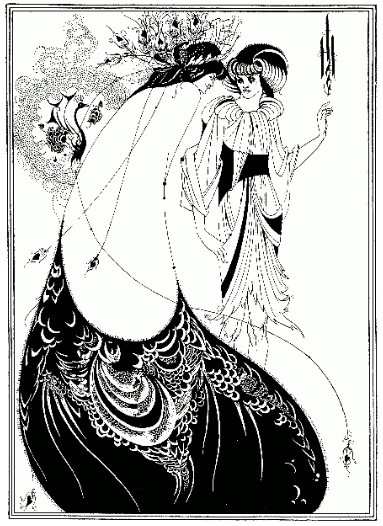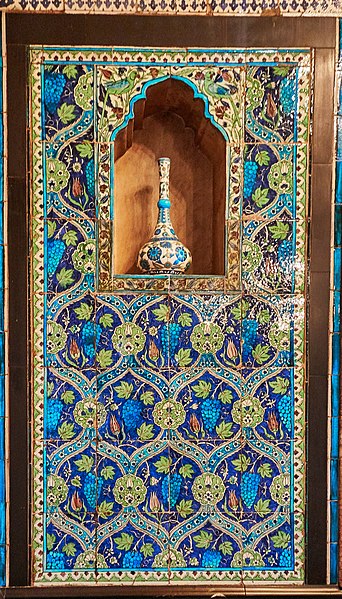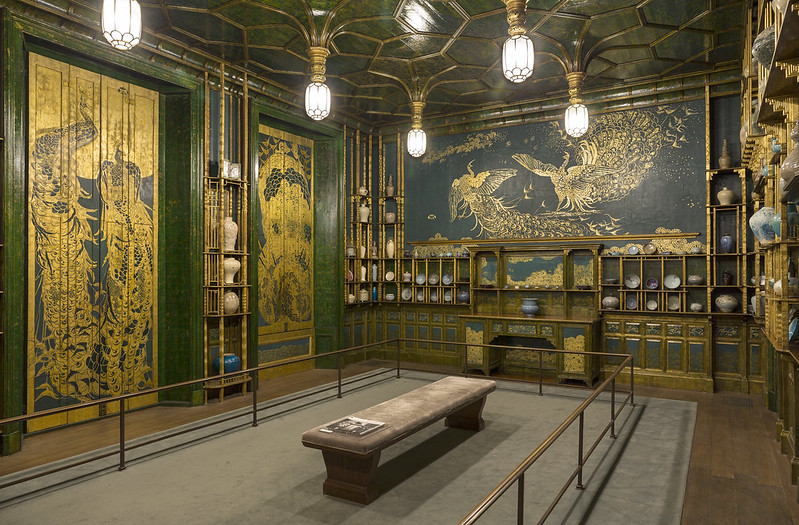Aesthetic movement
Contents |
[edit] Introduction
Aesthetics is a branch of philosophic study that relates to the nature and expression of beauty and taste; in other words, the appearances of things. It is derived from the Greek word ‘aisthetikos’, which refers to sensory perception and understanding or sensuous knowledge. As aesthetics concerns an appreciation of beauty, it is influenced by the subjective taste of an individual.
The Aesthetic movement (also known as Aestheticism) was a school of intellectual thought that emerged in England in the 1800s. The movement spread to Europe and North America in the late 1800s and became associated with a cultural approach that influenced fine art, music, literature, interior design, decorative arts and architecture on an international scale.
Seen as a distinct contrast to artistic movements that incorporated and highlighted the social and political themes of the times, the Aesthetic movement emphasised beauty and aesthetic values. In the fine arts it was associated with the phrase ‘art for art’s sake’.
[edit] The philosophy of Aestheticism
According to the tenets of Aestheticism, literature, painting and music were about beauty, nature and sensuality. Philosopher Emmanuel Kant suggested that rather than relaying messages about morality or other traditional beliefs, Aesthetic art existed solely to be beautiful.
The poet and playwright Oscar Wilde was an advocate for the Aesthetic movement. Tutored by art critics Walter Pater and John Ruskin, Wilde captured the essence of Aestheticism both in its literary form and as a vehicle for graphic design and interior design. His manuscripts were illustrated by some of the leading figures in the movement (such as Aubrey Beardsley, whose drawings for Wilde’s play, Salomé, were so scandalous that some were only printed privately), and in life, he was described as an Aesthetic.
The Peacock Skirt, illustration by Aubrey Beardsley for Oscar Wilde's play Salomé (1892).
During a tour of North America, Wilde delivered lectures on Aestheticism and good taste - impressing upon his audiences the importance of the new "English Renaissance in Art" and interior decoration. While his manner and delivery could be charming, scandals about his private life tarnished his reputation. In some instances, Wilde did not find his audiences terribly receptive.
He said, “A fresh mode of beauty is absolutely distasteful to them, and whenever it appears they get so angry and bewildered that they always use two stupid expressions - one is that the work of art is grossly unintelligible; the other, that the work of art is grossly immoral. What they mean by these words seems to me to be this. When they say a work is grossly unintelligible, they mean that the artist has said or made a beautiful thing that is new; when they describe a work as grossly immoral, they mean that the artist has said or made a beautiful thing that is true.”
[edit] Elements of the exotic in architecture and decor
Despite Wilde's observations, the Aesthetic movement did experience a degree of success in the form of architecture and decoration. On the outside, many of the residences built for followers of the Aesthetic movement were somewhat understated. Functionality was still a priority, although everything about the home had the potential to be treated as an artistic object. That became particularly apparent in interior decor and furnishings, which were created as an eclectic mix of styles, cultures and materials.
The Holland Park home of the British painter Frederic Leighton is an example of this mixture of restrained and exotic styles. Designed by George Aitchison, the exterior of the structure is simple and classical in style, but just inside the front entrance is an eye dazzling two-storey Arab Hall displaying Leighton's collection of tiles gathered during his travels to the Middle East.
Tile work from the Arab hall in Lord Leighton's house displays a small sampling of his collection.
In the decorative arts and interior design, the Aesthetic movement features several recurring motifs: nature is a centrepiece and useful items can be beautiful. Flowers, leaves, insects, birds (especially peacocks), spider webs and sunbursts are frequently featured in furniture design and decor. Decorative hardware, ceramic tiles, hinges, doorknobs and wallpaper are also good examples of the decorative arts where the focus is on the beauty of useful items.
Also apparent are Eastern influences. These appear in furniture made from ebonised wood with gilt decorations and blue and white china, crockery and other porcelain objects.
The Peacock Room is one of the most noteworthy examples of interior decoration from the Aesthetic movement. Designed by James Abbott McNeill Whistler for the shipping tycoon Frederick Leyland, the Peacock Room features a large scale frieze of stylised peacocks, gold on turquoise blue, that wind around the walls of the dining room.
[edit] Aesthetics and women as consumers and creators
For women (particularly middle class women), the Aesthetic movement was initially a marketing opportunity. Households with extra spending money were the ideal place for women who may be inclined to purchase new trinkets and “useful” but beautiful items.
Over time, women became involved in the creation of Aesthetic decorative items. Some attended art schools and were recognised for their talents. Others applied their skills to homemade tapestries or other creative outlets. For instance, Jane Burden, the wife of William Morris, and her sister Elizabeth Burden were English embroiderers who were essential to textile development at Morris, Marshall, Faulkner & Co.
Recognising the significance of the Aesthetic Movement, British designer William Morris (also a follower of the art critic John Ruskin) felt it was essential for beauty to be available to all in the form of well crafted products. He and his followers built upon the Aesthetics' appreciation, but Morris lessened the emphasis on pure beauty and instead focused on the relationship between art, labour and society. In the development of the Arts and Craft movement, Morris put Ruskin’s theories into practice, placing a high value on work, the pleasure derived from high-quality craftsmanship and the natural beauty of materials.
[edit] Related articles on Designing Buildings Wiki.
Featured articles and news
RTPI leader to become new CIOB Chief Executive Officer
Dr Victoria Hills MRTPI, FICE to take over after Caroline Gumble’s departure.
Social and affordable housing, a long term plan for delivery
The “Delivering a Decade of Renewal for Social and Affordable Housing” strategy sets out future path.
A change to adoptive architecture
Effects of global weather warming on architectural detailing, material choice and human interaction.
The proposed publicly owned and backed subsidiary of Homes England, to facilitate new homes.
How big is the problem and what can we do to mitigate the effects?
Overheating guidance and tools for building designers
A number of cool guides to help with the heat.
The UK's Modern Industrial Strategy: A 10 year plan
Previous consultation criticism, current key elements and general support with some persisting reservations.
Building Safety Regulator reforms
New roles, new staff and a new fast track service pave the way for a single construction regulator.
Architectural Technologist CPDs and Communications
CIAT CPD… and how you can do it!
Cooling centres and cool spaces
Managing extreme heat in cities by directing the public to places for heat stress relief and water sources.
Winter gardens: A brief history and warm variations
Extending the season with glass in different forms and terms.
Restoring Great Yarmouth's Winter Gardens
Transforming one of the least sustainable constructions imaginable.
Construction Skills Mission Board launch sector drive
Newly formed government and industry collaboration set strategy for recruiting an additional 100,000 construction workers a year.
New Architects Code comes into effect in September 2025
ARB Architects Code of Conduct and Practice available with ongoing consultation regarding guidance.
Welsh Skills Body (Medr) launches ambitious plan
The new skills body brings together funding and regulation of tertiary education and research for the devolved nation.
Paul Gandy FCIOB announced as next CIOB President
Former Tilbury Douglas CEO takes helm.
UK Infrastructure: A 10 Year Strategy. In brief with reactions
With the National Infrastructure and Service Transformation Authority (NISTA).


























